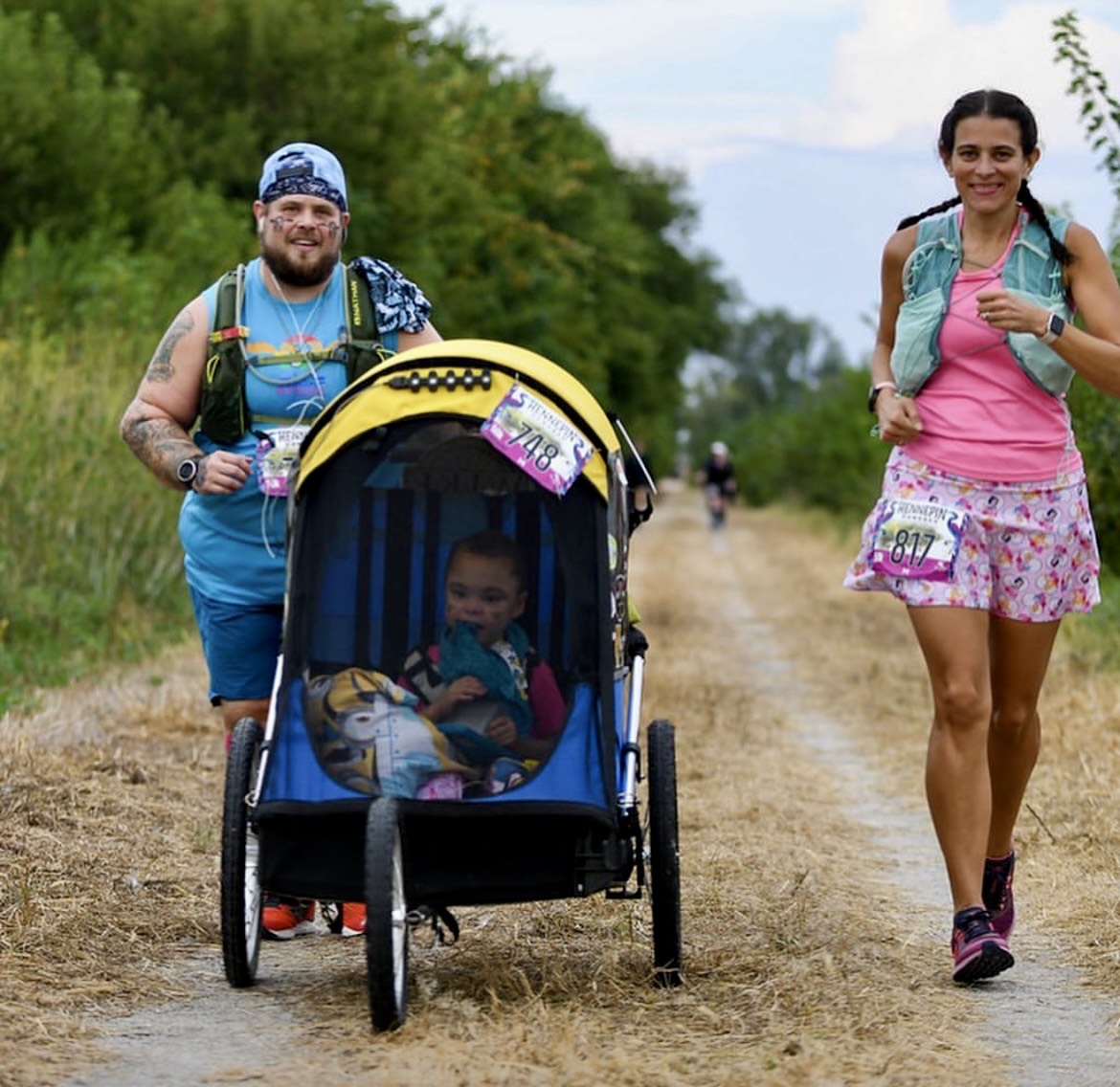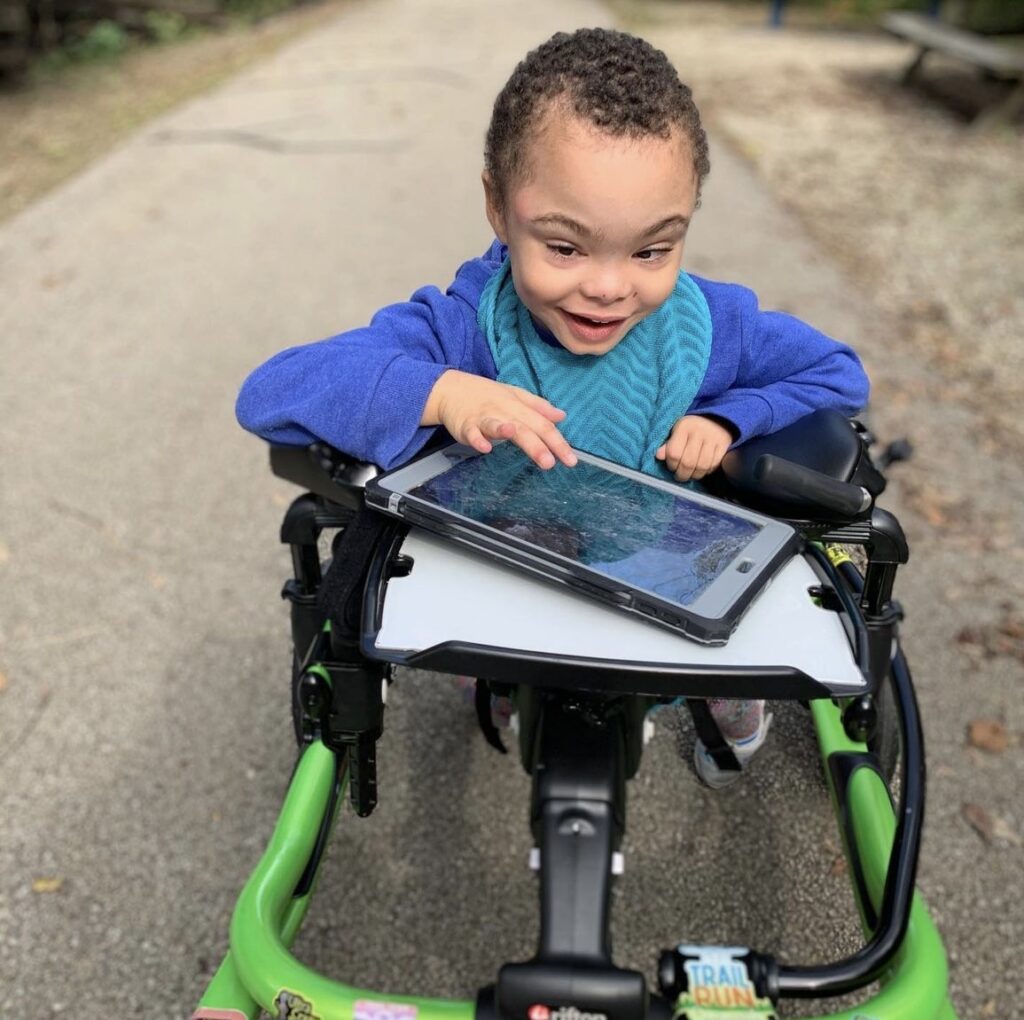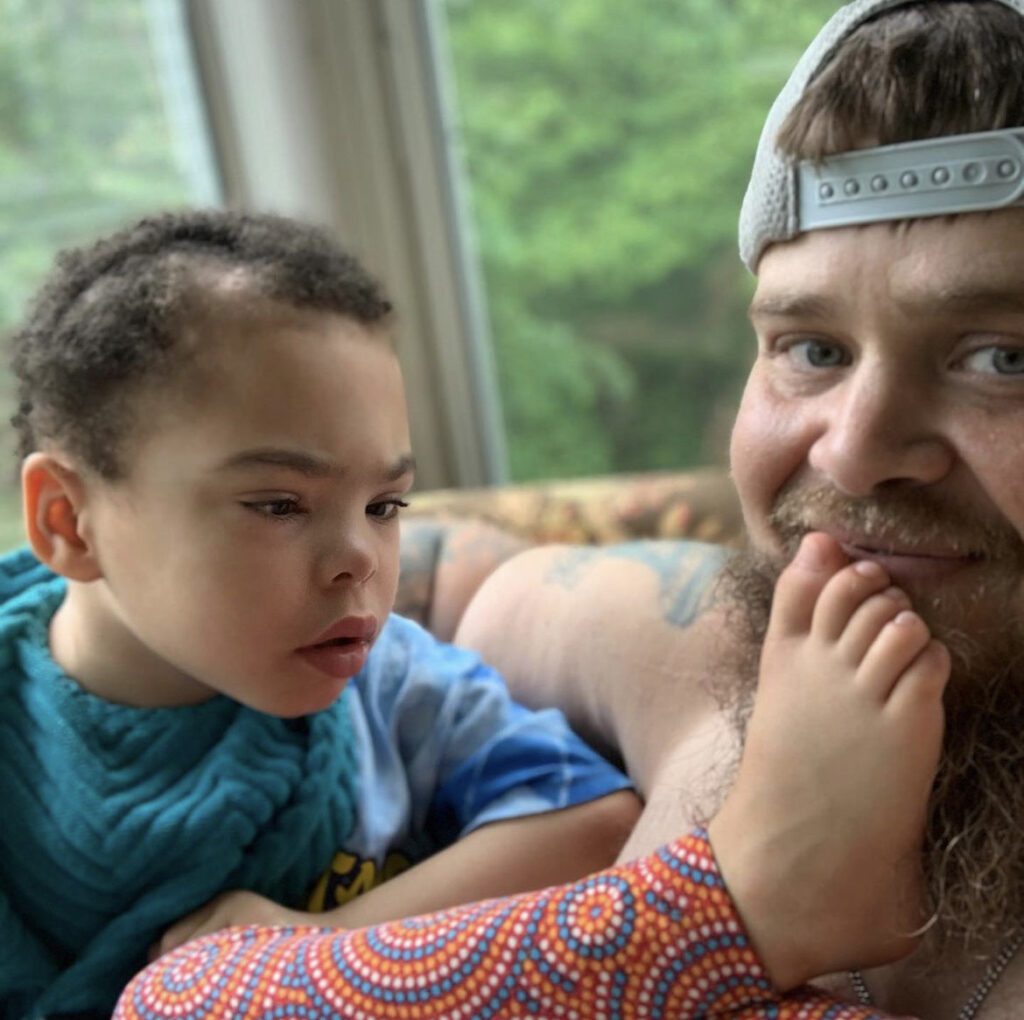

Everything seems to congeal, grow leaden, and gum up. It’s sinister in a way, the heaviness that settles over everything. It nurtures a terrifying feeling of suffocation and collapse. If the sky were ever to truly fall, one could easily imagine it occurring in the stale, breezeless hours of a humid afternoon.
However, those stolid afternoon hours had long since passed with the sky intact. The sun had set. Midnight had come and gone. And still, even in the predawn darkness, the humidity remained as thick and sticky as pine resin.
And it had effectively ground Ryan Steiner to a painful halt.
He had known for hours that he wasn’t adequately hydrating. He’d tried to be more mindful, ramping up his intake as the night wore on, but it was too little too late. The humidity had overwhelmed him. Cramps were knotting up his calves. Each breath felt drawn through a wet, warm cloth. And he was tired. He had been on the move for ten hours. Yet, despite all that, it wasn’t until his quads locked up that he truly felt he might not finish.
Ryan draped himself over the back of the chariot. He stared down at the crushed limestone trail beneath his feet. It glowed like faded amber in his headlamp. On his left, the staid black water of the Hennepin Canal ran smooth and silent. A few miles ahead in the darkness, dangling like an invisible carrot, was the small, sleepy town of Colona and the finish line.
“I didn’t think I could make it,” Ryan said, recounting his experience months later. “But I knew that no matter how bad it hurt me, she needed to cross that finish line.” The she Ryan was referring to is Kala, his six-year-old daughter. Kala has cerebral palsy and utilizes a chariot to join Ryan on runs. They trained together for three years in lead-up to the Hennepin 50k. Held annually, during the first weekend in October, the Hennepin Trail Races have become one of Illinois’ most popular ultra-events. They had fought to be there, and it was as much Kala’s race as it was Ryan’s. She had earned this. She had trained and wanted to finish as badly as he did.
Bent over the handlebar of Kala’s chariot, sweat pouring from his roughly bearded face, Ryan knew he had to gather himself. Pain was nothing new to him. Pain he could handle. Ryan had pushed Kala nearly thirty miles, almost entirely at night, in humidity that never dipped below 90 percent. He had to dig in and find a way to gut it out.
“I couldn’t keep her from finishing,” Ryan said. There were no other options.
He had to keep pushing.
* * *

He speaks plainly about it; after all, it is an undeniable facet of who he is. He never belabors having a diagnosis. He never sidles into melodrama. He simply contextualizes it—choosing to see his autism as a catalyst for self-reflection and personal growth. “I have endured a lot,” said Ryan, reflecting on his life. “I went to live in an institution in fifth grade. I am what’s called an ‘eloper.’ When things got rough, I would run. It didn’t matter where I was. I would get upset and take off running. I’d be gone and no one could find me. When they did find me there would be lots of violence and wrestling. It was really hard. I never felt like anyone understood me. Everything I said was misunderstood or misinterpreted.”
At 18, Ryan left the institution and eventually enrolled in college to study autism. While studying, Ryan began to identify attributes of his behavior that informed his impulsion to act in certain ways. Recognizing his own feelings of internalized aggression as a specific autism sub-type, Ryan began to search for proprioceptive activities to off-set his aggression. “I started skateboarding and bicycling. It wasn’t quite what I needed, but I could feel myself getting close. I used to imagine myself running. I knew runners. I wanted to do that, but I was so heavy.”
Weight had always been an issue for Ryan. Prescription medications combined his with tendency to self-medicate through food, had left him severely overweight. “At my heaviest, I was 713 pounds,” said Ryan. He would eventually lose well over 400 pounds, but not before certain people had entered his life.
He met Amanda at bar while she was in town visiting friends and eventually they began dating. Amanda was a runner, and it was her patient approach to the sport and to Ryan that nurtured his earliest running experiences. “She told me, “You just need to slow down, you’re going out too fast.” But I was like, “That’s running!” And she said, “No, no. You’ve got to start out slow. Follow me.’” So, Ryan did. On one of their earliest dates, they ran two miles. “The way that she slowed down was enough for me to catch my breath, but I still thought I was dying,” said Ryan. “It was amazing. Afterwards, I felt that that was exactly what I had been looking for.”
In time they married and Amanda became pregnant. Kala was born seventeen weeks premature. Weighing under two pounds and suffering a severe brain bleed, her prognosis was grim. Her internal organs were shutting down. She couldn’t breathe without a ventilator. Cortical visual impairment had resulted from neurological damage, leaving her blind. Doctors gave her a 2% chance for survival. Kala wavered on the brink for months. Without knowing the extent of damage to her body and brain, Ryan and Amanda began preparing for life outside the hospital. Amanda is a music therapist for people with disabilities. Her experiences, combined with Ryan’s, gave the couple a unique advantage in developing a treatment path for Kala. Once at home, she thrived. Amanda and Ryan worked tirelessly to stimulate her neurological development to such an extent that the vision center in Kala’s brain healed and she is no longer legally blind. Her cerebral palsy has limited her mobility; however, she uses a wheelchair and is learning to walk.
Incidentally, it was a shared desire for stimulation that led to Ryan and Kala’s running partnership. “I need a physical outlet to feel okay,” said Ryan. “I used to just bounce on an aerobics ball, but then Kala thought that movement was awesome. She wanted me to hold her while I bounced, but that didn’t give me what I needed. So, I decided I am just going to go back to running and I am going to take her with me.” Ryan recalls the feeling of that first run vividly. “I knew the moment we stepped out the door and started walking that my goal was to run 100 miles,” said Ryan. “I started this adventure with Kala with the intention of running an ultra-marathon.”
* * *

In December 2020, on the urging of a friend, Ryan started sharing their journey on Instagram. In under two months, @running_with_kala amassed over 2,000 followers. He began engaging with people through social media, appearing on podcasts and writing articles. People found inspiration in their story. Ryan went from being misunderstood and misinterpreted, to being appreciated for his thoughtful, articulate advocacy. His decision to be accessible, to tell his story—and his daughter’s story—with an unvarnished realism, resonated deeply with people. His vulnerability before perfect strangers led to his having a community behind him, to having cheerleaders, a genuine support network, and a platform. People listen because his message is essential and nourishing, but they also listen because he knows how to frame it.
* * *
Ryan stopped short of the finish line, took a breath, and briefly surveyed the final hundred feet.
It lay open beneath muted halos of generator lighting, a large white tent flanking the trail. Sponsorship banners were securely cinched to unfurled rolls of blue plastic fencing. Thin, fiberglass poles shot skyward above the fence line, each one adorned with a limp, lifeless flag—perfectly unfettered in the thick, breezeless humidity. Christmas lights twinkled demurely between the poles. Aluminum scaffolding wrapped in black cloth framed the finish. They made it. Ryan lifted Kala from her chariot and placed her in a gait trainer with her bib number securely attached.
Kala would walk from here.
A tremor rippled through the shadows. Those who had been mulling about, or were otherwise occupied, stopped to watch. Many took out their phones and began taking video. What the videos captured is a little girl dressed almost entirely in pink, walking beside her proud father toward two blue timing mats. Murmurs in the crowd became cheers which then became steady applause. Ryan, smiling widely, encouraged Kala forward. “Come on, baby bear,” he said. “Come on.” At the last possible moment, Ryan hung back just enough to let Kala go ahead and finish before him. It’s a subtle, yet rich, gesture—an act of love, humility, and grace. “I could barely move, but I reached down and picked her up from her gait trainer,” said Ryan. “She put her cheek against mine and we just squeezed each other.”
* * *

The upcoming year will likely see Ryan and Kala returning to Hennepin. “I will not miss it. That will be our family race every year,” said Ryan. He also plans on running the Earth Day Trail Races, Galena Sky Races, and a fun-run at Kettle Moraine. Each of those events are coordinated by Ornery Mule Racing, which hosts a wide variety of trail events throughout the Midwest. Ryan and Kala have found a home within the Ornery Mule community. “I find a place I am comfortable with, and I stick with that. I branch out with people I am comfortable with and who will branch out with me. That’s an accommodation I make for myself as an autistic person.” Kala will not join him for all of those races. The difficult terrain and changes in elevation on some of those courses make pushing a chariot impossible. Their goal, however, remains unchanged. Someday, Ryan and Kala will attempt to finish 100 miles together.
And, in the end, whether they succeed or otherwise, may not be the point. Perhaps the arc of their story is their story.
Ryan and Kala endure.
Running With Kala originally appeared in Eat Clean, Run Dirty Magazine - Volume 6.
Banner photo provided by Jenny ThorsenOther photos provided by Ryan Steiner
